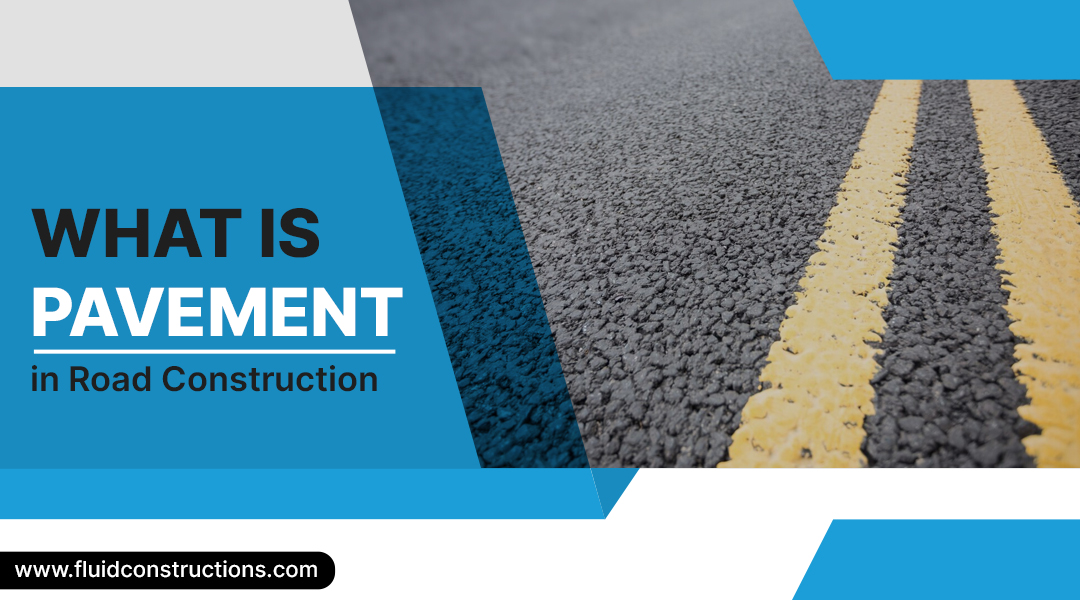
What is Pavement in Road Construction
The pavement is the part of the road that carries traffic. Therefore, pavement construction is considered a critical part of the infrastructure development to provide the expected service quality for many years. In this blog, we’ll delve into various types of pavements and their construction.
In road engineering and construction, the two main types of pavement are rigid and flexible. These two types differ in the process of constructing road pavement and the materials that result in different physical properties.
Flexible pavements
Flexible pavements are found to be the most commonly used type of road pavement construction in India for new road projects. Flexible pavements usually consist of several layers, where the top or surface layers are usually made of road asphalt. Wheel loads from traffic are distributed vertically to the subgrade by particle-to-particle contact of aggregates via the unbound granular layers of flexible pavements. The subgrade, which is made of earth, sits beneath the layers of pavement and buttresses the pavement.
Asphalt highways and other bituminous roads are examples of flexible pavement. Gravel roads, which are prevalent in rural areas worldwide, are also classified as flexible pavement types. These include access roads, farm-to-market routes, and quarries.
Rigid pavements
For building rigid pavements. A granular subbase is laid on the ground, over which an in-situ concrete slab, either reinforced or unreinforced, is placed. The traffic loads are supported by the flexural strength of the concrete slab, which behaves like a stiff plate, transferring the load over a larger region of subgrade. Concrete roads are called rigid pavements, in which joints are used between concrete slabs to prevent cracking.
High axle loads and extremely high traffic volumes are not a problem for concrete road surfaces. These days, you can find them more frequently in cities, ports, and other places where big trucks move slowly. Rigid pavement normally has a 40-year design life, during which time slab cracking or joint deterioration are the usual causes of failure.
Specifications for a pavement
Ideally, the following criteria should be satisfied by the pavement: construction:
- Enough thickness on the subgrade soil to disperse the wheel load strains to a safe value,
- Strong enough structurally to endure any kind of stress placed on it,
- Sufficient coefficient of friction to avert vehicle slipping
- Smooth surface to keep drivers comfortable even when travelling at high speeds,
- Reduce the amount of noise that moving cars make.
- Dust-proof surface to prevent visibility reductions that could compromise traffic safety,
- Impermeability of the surface, which provides excellent protection for subgrade soil besides ensuring long design life and low maintenance costs.
How to construct a pavement?
In order to ensure that the pavement is usable for the duration of its design life, the pavement engineer designing the road must choose the appropriate material and layer thickness. The strength of a pavement is typically measured by the number of vehicles supported by the pavement.
Finalising the construction specifications is done once the requirements for road paving are obtained, including the life span and how it must support traffic. Whether the pavement should be rigid or flexible, as well as the materials and layer thickness, are also major design criteria.
Flexible pavement construction
The construction of flexible roads involves the preparation of subgrade and successive layers of carefully chosen granular aggregates placed over one another. Bitumen is used to bind the aggregates together, which are then compacted for levelling. Although naturally existing materials found in the ground are frequently utilised, employing manufactured, crushed aggregates yields better results.
Crushed rock with an angular particle shape and a mix of particle sizes in a certain range make up the layers of crushed aggregate (unpaved) roads. To help with compaction, the layers are wetted, which enables the particles to cling together and solidify. When multiple layers are utilised, the upper layer is made of finer-textured granular material, and the lower layer has a coarser grading.
Bitumen holds aggregate particles together in flexible pavements to create a robust, flexible, and waterproof covering. Tarmac, often known as asphalt concrete, is a combination of bitumen and gravel. It is possible to apply a thin, flexible layer of bitumen mixed stone chips on aggregate roads, which will help maintenance, prevent dust, reduce water seepage, and offer a safer driving surface. Stone chips are dispersed across the surface, bonded in place by the bitumen, then sprayed with bitumen.
Rigid pavement construction
Rigid pavement is composed of cement concrete. Rigid pavements do not bend appreciably under traffic pressures, in contrast to flexible pavements. Therefore, the bulk of the load-carrying capacity of a rigid or concrete pavement design is accounted for by the high modulus of elasticity and stiffness of the concrete slab.
Unlike flexible pavement, which is built in many layers, rigid pavement is spread either directly on the prepared subgrade or on a single layer of stabilised or granular material.
The rigid pavements disperse the loads through a process called slab action. The pavement’s concrete slabs act like elastic plates submerged in a viscous liquid.
Assuming an elastic plate rests on a viscous basis, rigid pavements should be studied using plate theory. Rigid pavements are made of Portland cement concrete.
Types of Rigid Pavements
Rigid pavements can be classified into four types:
- Jointed plain concrete pavement (JPCP),
- Jointed reinforced concrete pavement (JRCP),
- Continuous reinforced concrete pavement (CRCP), and
- Prestressed concrete pavement (PCP).
Wrap up
The main purpose of highway pavement, which is made up of layers of processed materials laid over a natural soil subgrade, is to distribute applied vehicle loads to the subgrade. The wheel loads must be sufficiently decreased to a level within the subgrade’s bearing capability. The other objectives of pavement construction include providing a surface that offers acceptable riding quality, sufficient skid resistance, advantageous light reflective properties, and minimal noise pollution.
